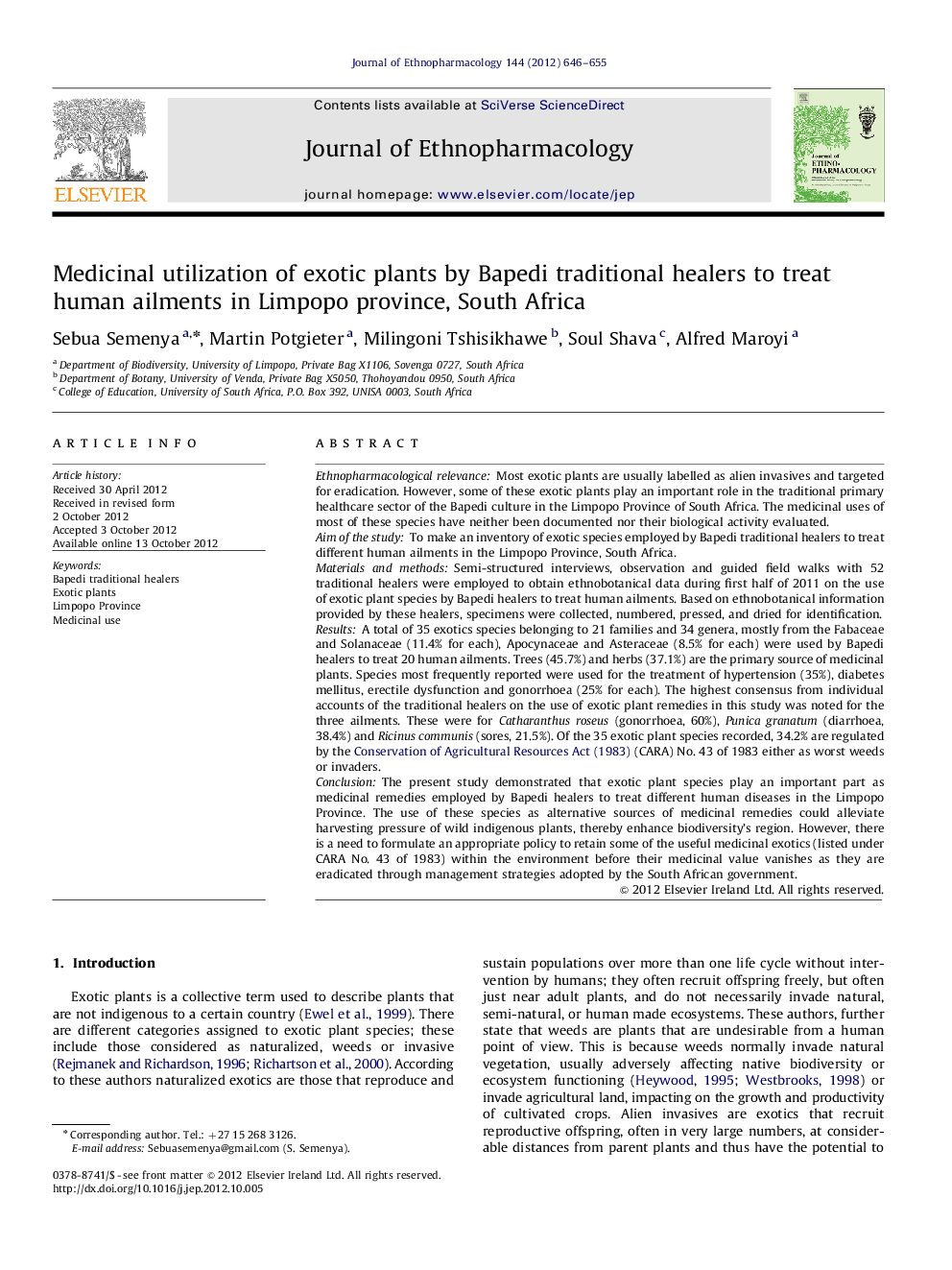| کد مقاله | کد نشریه | سال انتشار | مقاله انگلیسی | نسخه تمام متن |
|---|---|---|---|---|
| 5837886 | 1123973 | 2012 | 10 صفحه PDF | دانلود رایگان |

Ethnopharmacological relevanceMost exotic plants are usually labelled as alien invasives and targeted for eradication. However, some of these exotic plants play an important role in the traditional primary healthcare sector of the Bapedi culture in the Limpopo Province of South Africa. The medicinal uses of most of these species have neither been documented nor their biological activity evaluated.Aim of the studyTo make an inventory of exotic species employed by Bapedi traditional healers to treat different human ailments in the Limpopo Province, South Africa.Materials and methodsSemi-structured interviews, observation and guided field walks with 52 traditional healers were employed to obtain ethnobotanical data during first half of 2011 on the use of exotic plant species by Bapedi healers to treat human ailments. Based on ethnobotanical information provided by these healers, specimens were collected, numbered, pressed, and dried for identification.ResultsA total of 35 exotics species belonging to 21 families and 34 genera, mostly from the Fabaceae and Solanaceae (11.4% for each), Apocynaceae and Asteraceae (8.5% for each) were used by Bapedi healers to treat 20 human ailments. Trees (45.7%) and herbs (37.1%) are the primary source of medicinal plants. Species most frequently reported were used for the treatment of hypertension (35%), diabetes mellitus, erectile dysfunction and gonorrhoea (25% for each). The highest consensus from individual accounts of the traditional healers on the use of exotic plant remedies in this study was noted for the three ailments. These were for Catharanthus roseus (gonorrhoea, 60%), Punica granatum (diarrhoea, 38.4%) and Ricinus communis (sores, 21.5%). Of the 35 exotic plant species recorded, 34.2% are regulated by the Conservation of Agricultural Resources Act (1983) (CARA) No. 43 of 1983 either as worst weeds or invaders.ConclusionThe present study demonstrated that exotic plant species play an important part as medicinal remedies employed by Bapedi healers to treat different human diseases in the Limpopo Province. The use of these species as alternative sources of medicinal remedies could alleviate harvesting pressure of wild indigenous plants, thereby enhance biodiversity's region. However, there is a need to formulate an appropriate policy to retain some of the useful medicinal exotics (listed under CARA No. 43 of 1983) within the environment before their medicinal value vanishes as they are eradicated through management strategies adopted by the South African government.
337
Journal: Journal of Ethnopharmacology - Volume 144, Issue 3, 18 December 2012, Pages 646-655